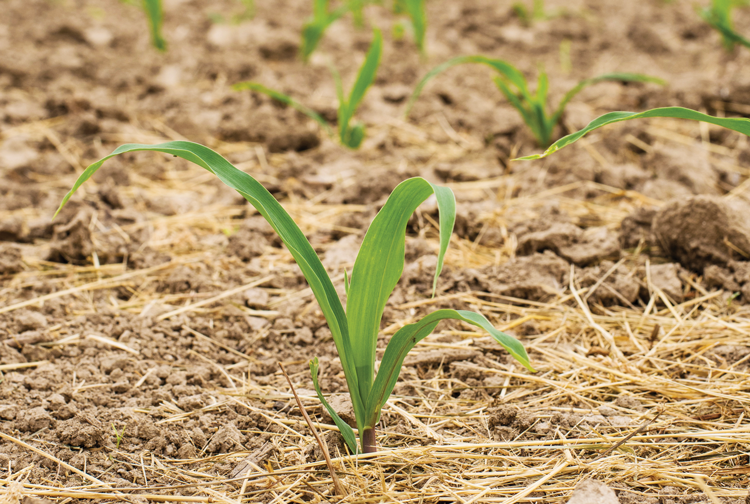
One of the most significant improvements in corn breeding over the past half century has been the plant’s tolerance of higher populations. When I started working as an agronomist in northern New York in the late 1960s, we did several corn plant population studies.
We found that some of the more popular hybrids of the day, when planted at rates resulting in 18,000 to 20,000 plants per acre, would produce a large ear — but often with a large cob. Some of these ears had 24 rows of kernels compared to the 16 rows we typically see in today’s corn hybrids, but because of the large cobs, the shallow kernels had little resemblance to the kernel shape we see now. When we increased plant population to 24,000, some hybrids produced poorly filled ears with a rise in the number of barren plants.
The more the merrier?
How times have changed! From 2008 through 2019, Purdue University agronomists conducted almost 100 field-scale evaluations of corn populations ranging from 23,000 to 40,000 plants per acre. They found that the corn hybrids in these trials had a great deal of tolerance to high populations, but the plants also compensated well for low populations. They noted that the maximum corn grain yield was at 32,000 plants per acre.
The results of this research generally agrees with data cited by Corteva, where a series of Pioneer silage hybrid studies (from 2004 to 2007) found that 24-hour neutral detergent fiber (NDF) digestibility changed by only 1 percentage point when hybrids were planted at a range of populations from 18,000 to 42,000 plants per acre. Furthermore, starch percentage was very similar at both 18,000 and 42,000 plants per acre.
The corn in the Purdue trials was harvested for grain; most agronomists and seed company representatives recommend a slightly higher plant population when the crop will be harvested for silage. Research by the University of Wisconsin-Madison found that the economically optimum plant population for corn silage is about 1,500 plants per acre more than when the same hybrid is harvested for grain. Other sources recommend between 1,000 and 2,000 more plants per acre when the crop will be harvested for silage.
Note the term “economically optimum” plant population in the Wisconsin study. The yield figures don’t account for seed cost, an input that’s gone up considerably in price in recent years.
The Purdue University research did account for seed costs, and found that while the highest yield was at 32,000 plants per acre, the maximum economic yield was about 27,000 plants per acre. Therefore, while farmers should plant enough seed to achieve high economic yields, raising the planting rate beyond the “sweet spot” can reduce profitability.
Impact on standability
Few corn silage trials report any measures of standability (lodging resistance). We can’t rely on using the standability data from grain trials because silage harvest occurs much earlier in the fall, and therefore, the plants are less affected by the challenges from corn insects — primarily European corn borers and corn rootworms — and stalk rots. So, while we may expect that increasing plant population past a certain point could result in more lodging because stem diameter is reduced with a higher population, it’s almost impossible to find this data when the crop is harvested for silage.
We also lack lodging data for brown midrib (BMR) hybrids. I’ve seen recommendations that to limit lodging problems, BMR hybrids should be planted at a “moderate” population, but what is “moderate”?
When Cornell University was conducting its statewide corn silage hybrid trials (they ended in 2017), I complained to Bill Cox, the agronomist responsible for the trials, that the results didn’t include standability data. Cox said that was because there were no lodging problems in any of the trials, which usually included one or more BMR hybrids. That is a good answer!
The Cornell University trials were planted at 34,000 kernels per acre, then hand-thinned to a uniform plant population of 32,000. Taking this into consideration, when planting BMR hybrids I think farmers should follow the seed company’s planting rate recommendations. Not only is the BMR seed cost higher than for most standard hybrids, but the lower lignin content of BMR corn suggests a conservative approach.
The current rules
Finally, today’s superior seed corn quality has resulted in high germination and emergence, so the old recommendation to plant 15% more seed than the target population is now dated. Current recommendations, with good seedbed preparation and a properly calibrated planter, are to overplant by about 5% when conditions are ideal and by about 10% when the soil is cold or conditions are otherwise less than ideal.





